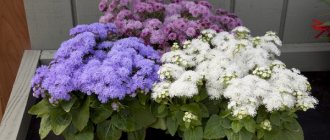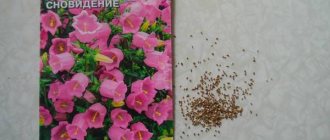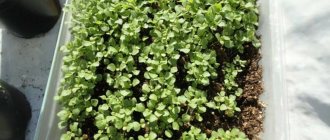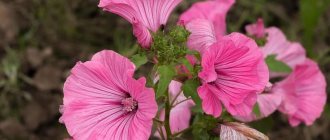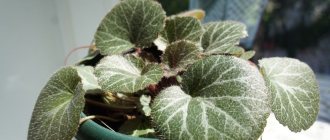Verbena is a uniquely beautiful plant that will ideally fit into the landscape composition of a garden or local area. In Russia, the most commonly used annual varieties are those that are relatively unpretentious and easily adapt to climate conditions.
The flower is usually planted by seedlings. This is how you get healthy, beautiful plants.
Planting verbena seeds for seedlings has its own characteristics. Which? This is what this article is about.
When to plant verbena seedlings in 2022
Gardeners around the world advise planting seedlings according to the lunar calendar. It is believed that this natural satellite of the Earth has a strong influence on young plants, like the ebb and flow of tides.
According to this rule, a lunar calendar is drawn up, which marks the most favorable days for soda work and the unlucky ones for each month
According to this rule, a lunar calendar is drawn up, which marks the most favorable days for soda work and the unlucky ones for each month.
For verbena, the following favorable days for planting seedlings are distinguished:
- February: 23, 24, 25, 26, 27, 28, 29;
- March: 1, 2, 3, 4, 5, 6, 7, 8, 25, 26, 27, 28, 29, 30, 31;
- April: 1, 2, 3, 4, 5, 6, 7, 24, 25, 26, 27, 28, 29, 30.
The following days are suggested for transplanting to open ground, to beds in the garden or a house plot:
- May: 1, 2, 3, 4, 5, 6, 23, 24, 25, 26, 27, 28, 29, 30, 31;
- June: 1, 2, 3, 4.
In turn, there are also unfavorable days on which it is recommended to refrain from any gardening work:
- February: 9, 10, 11, 12, 13, 14, 15, 16, 17, 18, 19, 20, 21, 22, 23;
- March: 9, 10, 11, 12, 13, 14, 15, 16, 17, 18, 19, 20, 21, 22, 23, 24;
- April: 8, 9, 10, 11, 12, 13, 14, 15, 16, 17, 18, 19, 20, 21, 22, 23.
You should also refrain from transplanting to open ground on May 8 and 22, as well as June 5. On all other days you can work on seedlings and caring for them.
Care
The plant does not require complex care.
- Watering: young plants need regular watering; After rooting and during flowering, it is enough to water the verbena once a week, avoiding waterlogging of the soil.
- Soil: medium, well-drained, evenly moist.
- Feeding: the plant is fed with complex mineral fertilizer once a year (in spring); You can additionally feed 1-2 times during flowering.
- Pruning: to increase productivity and flowering period, shoots are pinched or trimmed to approximately 1/4 of their height, and faded inflorescences are removed.
- Features: resistant to high temperatures, requires full sun exposure from 8 to 10 hours daily, fresh air or ventilation.
Working with seedlings depending on the region
The lunar calendar is not the only criterion on which the planting of seedlings depends. Another important condition is the climatic conditions of the region.
For example, in central Russia, seeds begin to be planted from the beginning of March or from the end of February. Winter in such regions gives way to warm spring, and the ground quickly recedes after frost.
But in the northern regions there is no need to rush. Therefore, in Siberia and the Urals, seedlings begin to be planted in mid-to-late April, and verbena is transplanted into the garden closer to mid-summer.
Usually weather forecasters make weather forecasts for winter and spring. It is different from year to year, so you always need to focus on specific conditions. Seedlings need sufficient heat and light
If spring in the region turns out to be cloudy, cloudy, or rainy, then it must be additionally illuminated with ultraviolet lamps.
There is no need to rush in this matter, especially when transplanting to open ground. It is necessary to wait for relatively stable weather, when there are no night frosts, and warmth and sun prevail during the day.
Sowing time
To grow annual verbena, the seedling method is used. This is due to the length of the period from sowing to flowering, which is 70-100 days, in some varieties it reaches 120 days. The packaging of seeds from responsible producers always indicates the recommended sowing time.
Regions
When determining the sowing time, you should start from the planned time of planting verbena seedlings outside, since it does not tolerate frost. In different regions, warm weather without dropping to sub-zero temperatures at night comes at different times. This should serve as a key point when calculating sowing dates.
Sowing time:
- Central region – March;
- Northwestern region – early – mid-April;
- Ural, Siberia - April;
- Central Black Earth and North Caucasus regions - late February - mid-March.
Moon calendar
Climate features make it possible to determine the period of sowing in different regions. Specific sowing dates are helped by choosing the lunar calendar, which determines favorable and unsuitable days in the desired month.
You should not sow on the days of the full moon and new moon. The most productive days for sowing are the days during the waxing Moon, but during the waning Moon you can also carry out sowing work.
Pros and cons of the method
Typically, verbena, both annual and annual, is planted through seedlings. It has a weak point - a low level of frost resistance, so in open ground the plant may not germinate or severe frosts will damage the root system and prevent further development.
The method of growing seedlings has several significant advantages:
- Seedlings allow you to get healthier, more beautiful plants that can take root in open ground.
- Easy to grow and care for. The gardener does not require any special skills or experience.
- The ability to create a unique composition from several varieties. Experienced gardeners can even create different designs or patterns.
The only disadvantages of the seedling method include the additional costs of purchasing cassettes, soil, and various mineral mixtures for bait.
Suitable varieties
To date, over 100 varieties of verbena have been developed. But only a few are grown in Russia, since not all of those available can adapt to changing climate conditions. Let's look at a few of the most suitable ones:
| Variety | Description |
| Buenos Aires | It belongs to the giant varieties, the plants of which can reach a height of up to one meter. This verbena has a distinctive feature: large inflorescences of a rich pink-violet color. Baskets of this variety consist of many small flowers; they fit perfectly into any flower arrangement. |
| Tough | It has thin creeping stems. It comes in a wide variety of shades, usually soft blue or deep blue. The main feature of this variety of verbena is its delicate and pleasant aroma, which is often used to create perfume compositions. |
| Canadian | Refers to dwarf varieties, the plants of which do not exceed 20 centimeters in height. It is distinguished by delicate, soft shades of buds: pink, lilac, white, sky blue. The main advantage of the variety is its abundant flowering, which lasts throughout the summer. |
| Hybrid | Most often found in Russian gardens. This species was specially bred for local climatic conditions. The height of such verbena can be from 20 to 50 centimeters. It is distinguished by abundant, lush flowering and a variety of colors: from delicate cream shades to rich pink. |
| Straight | Also refers to giant varieties, the height of which can reach a meter. This verbena is grown mainly in the central regions. Its main difference is its bright, rich green, jagged foliage. But the flowering of this variety is very short. |
You should always focus on local climate conditions, soil conditions, abundance or lack of moisture.
Each seed package contains recommendations for a specific variety that you need to pay attention to.
Planting Verbena seeds step by step
Planting verbena seedlings has its own distinctive characteristics. Let's take a closer look at the main points:
- Seed selection. The variety is chosen, as already mentioned, based on the climatic conditions of the region, soils, amount of moisture and sunlight. Each package contains basic provisions that will help the gardener decide. It is also necessary to pay attention to the integrity of the packaging with grains: it must be free of defects and damage, tightly closed.
- Processing of seed material. First, the seeds must be carefully examined: they must be of high quality, without stains, damage, or the unpleasant smell of rot. Before planting seedlings, they are disinfected: soaked overnight in a weak solution of potassium permanganate. Also, immediately before planting, the seeds can be soaked in a growth stimulator for half an hour. The following drugs are ideal: “Zircon”, “Epin”, “Heteroauxin”.
- Selection and preparation of soil. To plant seedlings, you can use ready-made soil for flowering garden plants. The main advantage of the finished substrate is its precise, balanced composition, rich in minerals necessary for the plant. If the gardening store does not have a suitable one, you can make it yourself. To do this, mix: half a glass of wood ash, half a glass of sand, a glass of soil from the garden, two glasses of peat.
- Sowing process. Fill the container with soil for planting. Water it a little. Carefully move the seeds into the soil using a toothpick, deepening them 5-7 mm. Sprinkle warm water from a spray bottle on top. Cover with cling film to create a greenhouse effect and place in a warm place.
- Choosing a location. Select a warm, sunny place for seedlings. A window sill on the south or southwest side is ideal. If sunlight is not enough, it is recommended to additionally use ultraviolet lamps.
As you can see, the procedure for planting verbena seeds is no different from producing seedlings of other plants. Therefore, the process will not cause difficulties for gardeners, even beginners.
Features of growing at home
Verbena does not require special care at home. After planting seeds for seedlings, you must:
- Remove the film every day and ventilate the soil surface. This will prevent the seeds from rotting in the soil;
- spray with water from a spray bottle as the top layer of the substrate dries;
- two weeks after seed germination, add mineral bait to accelerate growth and development.
Approximately two to three weeks before the intended transplantation into open ground, seedlings must begin to be hardened off.
To do this, the container is taken outside for 2-3 hours. Thus, caring for verbena is extremely simple, but it will allow you to get good and healthy plants that will become a real decoration of the garden or local area.
How to care for Verbena seedlings
The seedlings are placed in a warm, illuminated place. The optimal temperature for verbena is 19-20°C - this is normal room temperature.
Every day the film is removed for 5-10 minutes for ventilation. And after the first shoots emerge, it is removed for good.
Caring for verbena has the following features:
- Verbena is watered as the soil dries. An abundance of moisture can cause the development of fungal diseases or rot. It is recommended to water young shoots with a spray bottle;
- Verbena shoots need additional nutrients to accelerate growth and development. For this purpose, special baits for flowering garden plants are used in liquid form;
- if the seedlings were planted in a common container, then after the first shoots appear, they must be planted in individual containers. The planting process is no different from planting seeds for seedlings; the same soil is used.
The plant is carefully lifted with a wooden stick and replanted along with a lump of earth.
The surface is watered with a spray bottle. In addition, verbena can be susceptible to various diseases and fungi. Let's take a closer look at the main ones and methods of treatment:
| Disease or pest | Signs | How to treat? |
| Powdery mildew | A white coating appears on the leaves, which resembles dust or flour. Droplets of moisture may appear on the inside of the foliage. | The causative agent of the disease is a fungus, so antifungal drugs are used for treatment. Affected parts of plants must be removed and burned, and healthy parts must be sprayed. |
| Blackleg | With this disease, rotting of the root system occurs. | This disease has no cure, and can also be transmitted to neighboring plants. This is why blacklegged verbena must be removed immediately. Treat the surface of the earth with a solution of copper sulfate, and neighboring plants with metalaxyl-M or fosetil. |
| Aphid | The growth and development of the plant slows down, small spots appear on the surface. | To control pests, special solutions - insecticides - are used. They, as a rule, have a wide spectrum of action and are used to combat various types of harmful insects. |
| Spider mite | A white coating appears on the leaves in the form of a thin web. The plant quickly loses its appearance and dries out. |
These recommendations will allow you to grow a healthy, beautiful plant that will definitely become a real decoration of your garden or local area.
Processing beds
An important condition is regular weeding. Weeds quickly become woven into the root system of plants; it is impossible to remove them without damaging the flower bush. Loosening is necessary for access to oxygen and evaporation of excess moisture.
By the way, peat will help to avoid the appearance of crust on clay soils. It is poured in a layer of up to 5 cm. It performs the function of mulch - it retains moisture.
To cultivate the soil, it is better to use paddle rippers; they damage the root system less.
The verbena seeds have sprouted, what to do next?
Gardeners, especially beginners, often have questions. The most common are the following:
- How can you stimulate seeds for further growth? For this purpose, special compositions are used - growth stimulants, for example, "Epin", "Zircon" or "Heteroauxin".
- When to plant seedlings in open ground? It all depends on the climatic conditions of the region. Planting begins after the soil has thawed, when there have been no night frosts for 10-14 days, and the temperature remains at a positive level. For most regions of Russia, this is the period from the end of April.
- What to do if verbena seedlings do not grow? Lack of growth indicates improper care. Recommends moving the seedlings to a sunny place or additionally lighting them with lamps, increasing or decreasing watering.
Verbena is an incredibly beautiful flowering plant. Don’t be afraid of it; feel free to use it for various landscape compositions, decorating a garden or a local area.
Adviсe
- To speed up the germination of sown seeds, it is recommended to put them in the refrigerator for a period of 2 to 3 days. For the same purpose, you can use a growth stimulator by soaking the seeds in the solution before sowing.
- With proper care, verbena is not prone to disease, but excessive watering can lead to rotting of individual parts of the plant and the appearance of diseases such as powdery mildew or blackleg. Regular watering is required only during the growth and flowering period, then it is reduced. Remember that watering should always be moderate. But the soil should not be allowed to dry out.
- To extend the flowering period of verbena, do not forget to remove faded inflorescences. You need to cut about a quarter of the length of the shoot. It is also necessary to regularly loosen the soil around the plant (especially during dry summers after watering), and remove weeds from single bushes.
Using the recommendations for growing verbena given in this article, you can independently and easily decorate your garden with this beautiful, unpretentious and long-flowering plant.
